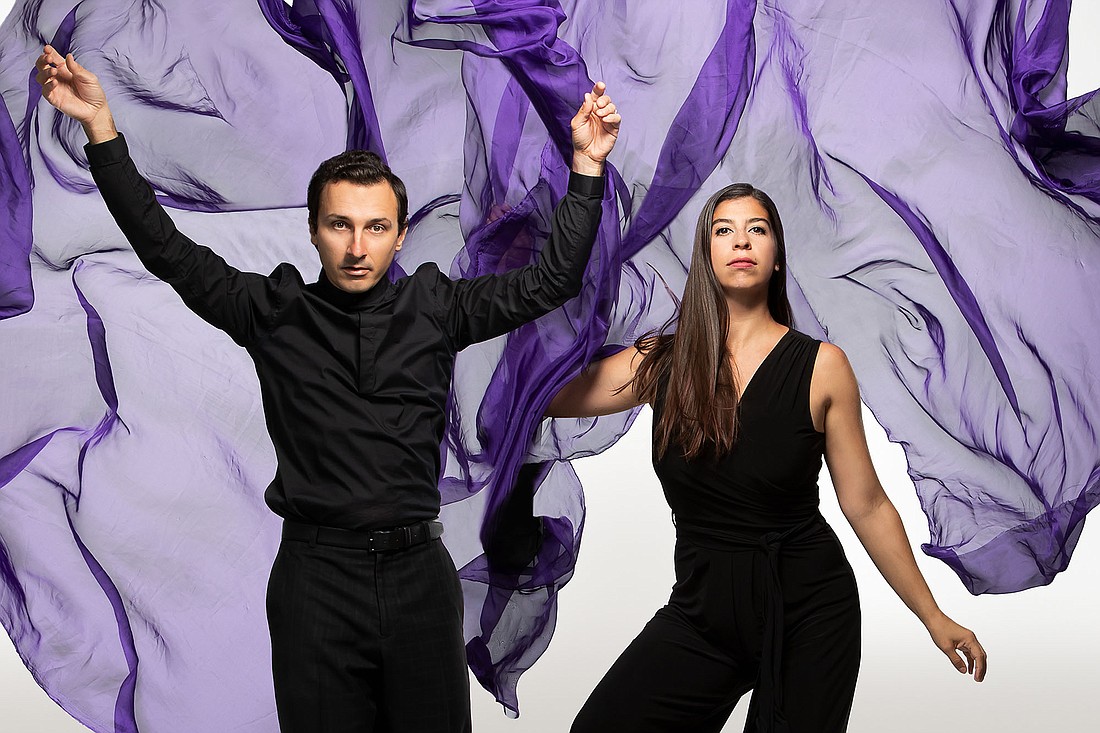- July 2, 2025
-
-
Loading

Loading

We all have reason to celebrate The Ringling’s Art of Performance "Parisian Refraction" mini festival featuring ensembleNewSRQ, the contemporary classical music group, at the Historic Asolo Theater. The first of four concerts on May 9 was a full-on sensory experience giving the audience plenty to enjoy and ponder.
Composers represented throughout the series all have some connection to Paris, the City of Light. Unsuk Chin and Kaija Saariaho both received commissions from IRCAM, the renowned Parisian institute dedicated to scientific research around sound and musical creation. They, and all avant garde composers, are adventurers exploring the frontiers of sound.
The one prerequisite of a pleasure-seeking audience member is to be open-minded to all types of new sound and combinations, to be curious, and to allow the experience of these works take you to new places in your imagination.
I find these experiences exhilarating and was not disappointed with Chin’s "Akrostichon-Wortspiel" (Acrostic Wordplay). Soprano Lucy Fitz Gibbon kept me riveted with her precise delivery and tonal control. In each of seven movements she delighted us in seven varied tales and emotional states.
An ensemble of 19 musicians, conducted by Dallas Symphony Orchestra Assistant Conductor Maurice Cohn, brought exceptional colors in support and contrast to the voice. There were plenty of sharp edges to the sonority brought by alternative tuning of some instruments, creating microtonal harmonies foreign to our Western ears. There was a lot to absorb, but it was fascinating.
Saariaho’s "Graal théâtre" (Grail Theatre) featured violinist Samantha Bennett, co-artistic director of ensembleNewSRQ. It stands apart from most of Saariaho’s work for there were no electronic elements. Instead, Saariaho, the Finnish composer who died in 2023, explored the expanded capabilities of the solo violin.
At times graceful and delicate and others rather Bach-ish with arpeggiated passages, Bennett was unfazed by the unexpected shifts and turns of mood and sound. The accompanying ensemble kept pace with Bennett’s flair, introducing flourishes of their own.
In this composition I found myself out of my comfort zone more frequently than in the others. Remember, that’s not a bad thing, just an observation. We experience music on different levels. Most prominently, we have a strong sensory experience hearing the sounds being produced – loud, soft, comfortably tonal or bristling atonality.
After the senses, we are drawn to either the emotional experience or the intellectual. Saariaho’s score left me puzzled by the structure and only slightly touched emotionally. Nonetheless, the sounds and the fearlessness of the soloist left me amazed.
Chin’s Double Concerto closed the program with a tour de force display of percussive artistry. George Nickson, ensembleNewSRQ co-artistic director and principal percussionist of the Dallas Symphony Orchestra, commanded a vast percussion array with vibraphone, xylophone and marimba, five types of bells, gong, tom tom and timpani.
Pianist Conor Hanick played only one piano and it was prepared with items inserted to alter the sound of the struck strings. Add the ensemble and we had a sensory feast.
There was so much to take in that it was hard to catch all the sound elements, but it was both fascinating and pleasurable. There was a groove of sorts to sink into and always an intriguing element to savor.
I was left amazed by the soloists, particularly Nickson, as we could clearly see the acrobatics required for his part. I was amazed as well by the ensemble with each musician using extended techniques and adding their unique colors to the whole throughout the program.
The Ringling might well consider keeping ensembleNewSRQ as a partner for an annual festival of this kind. It is downright exhilarating.